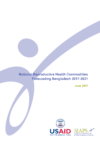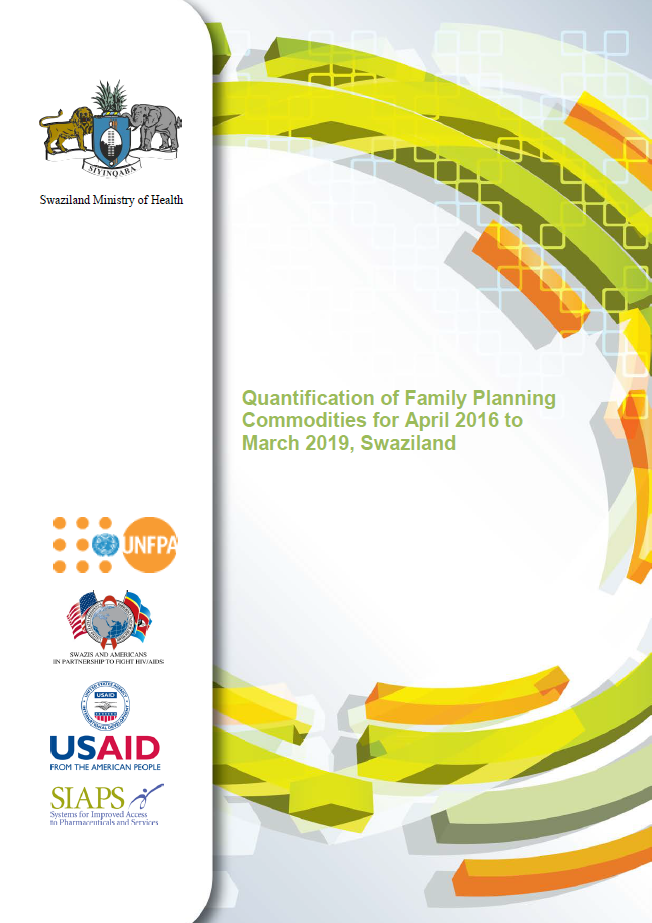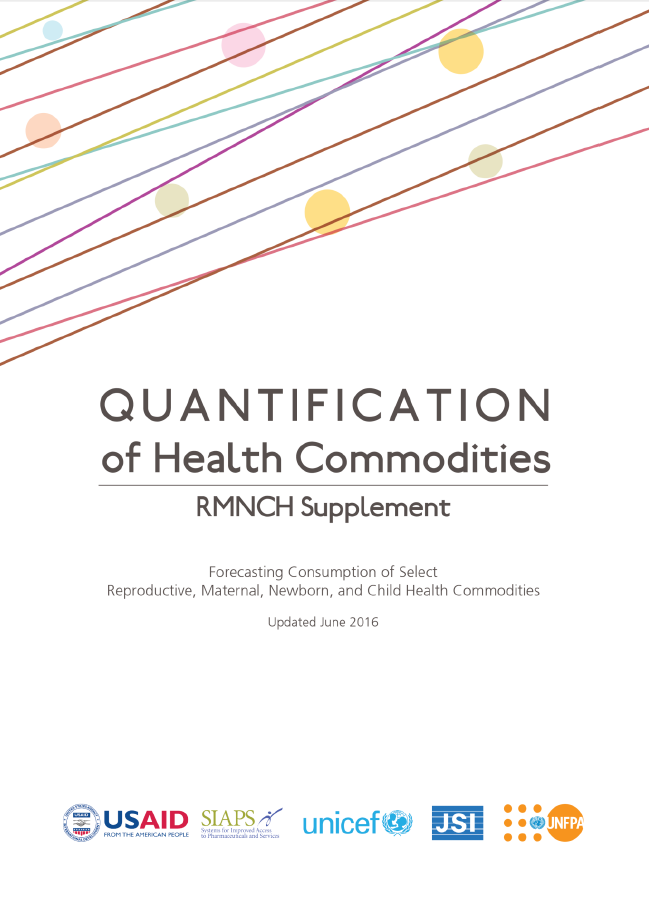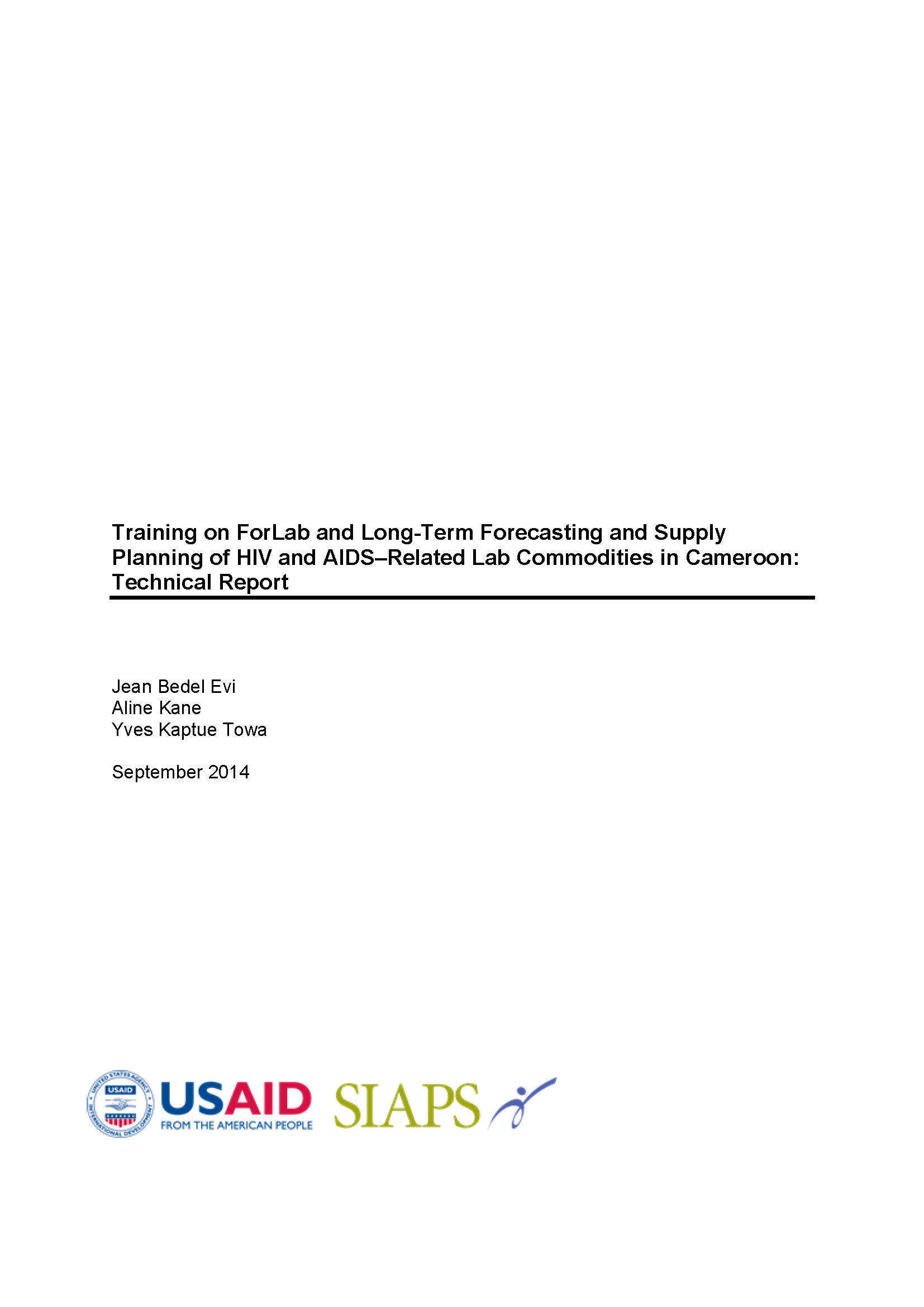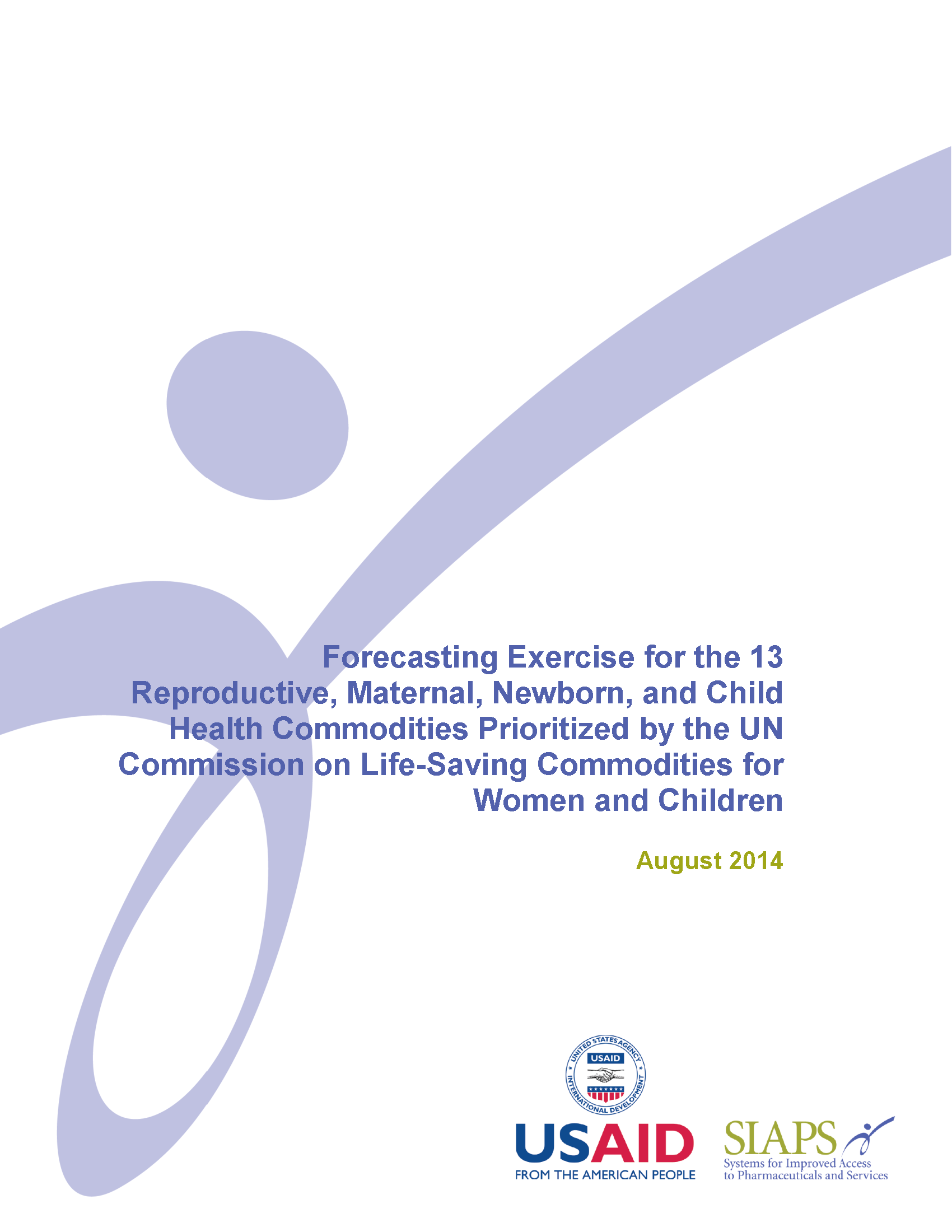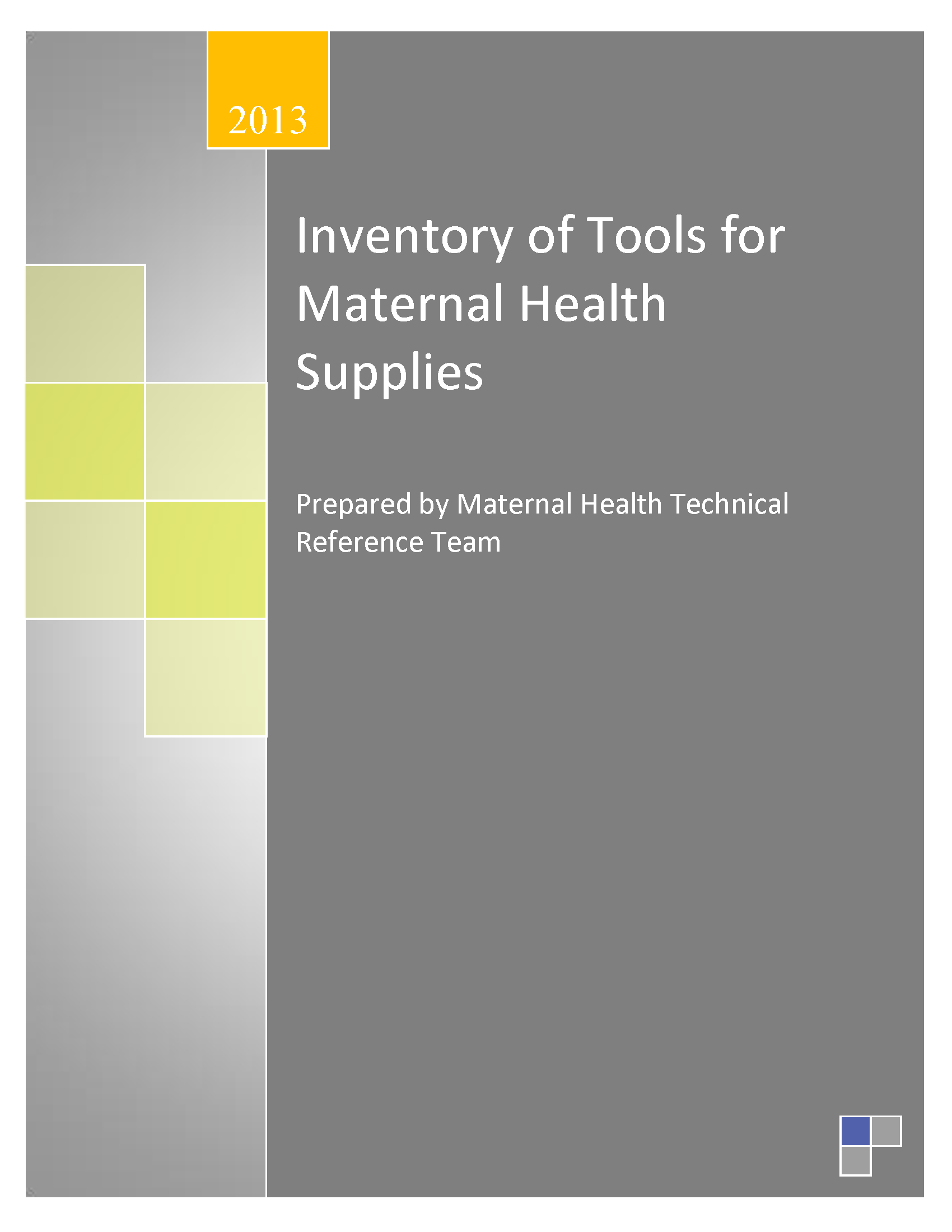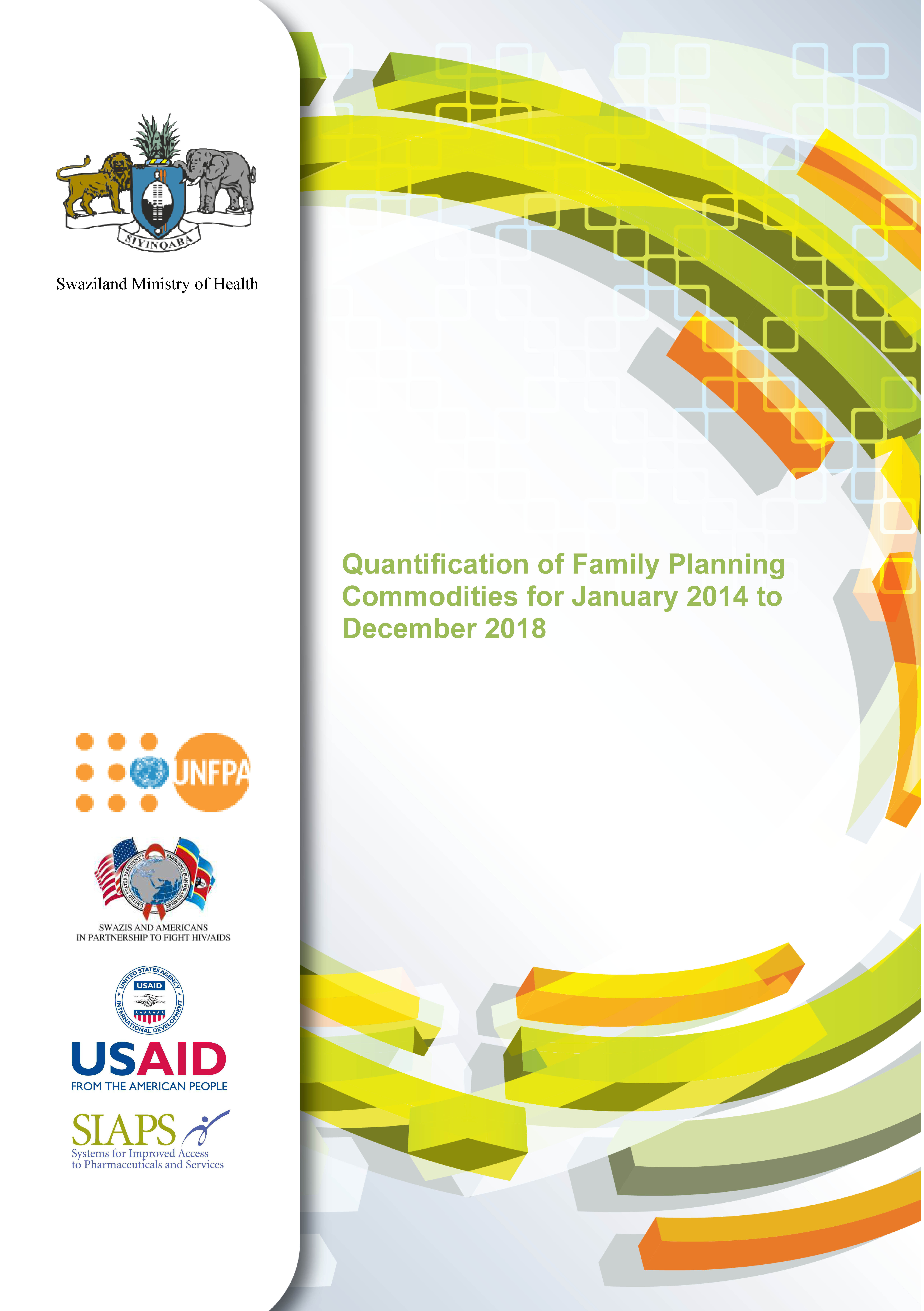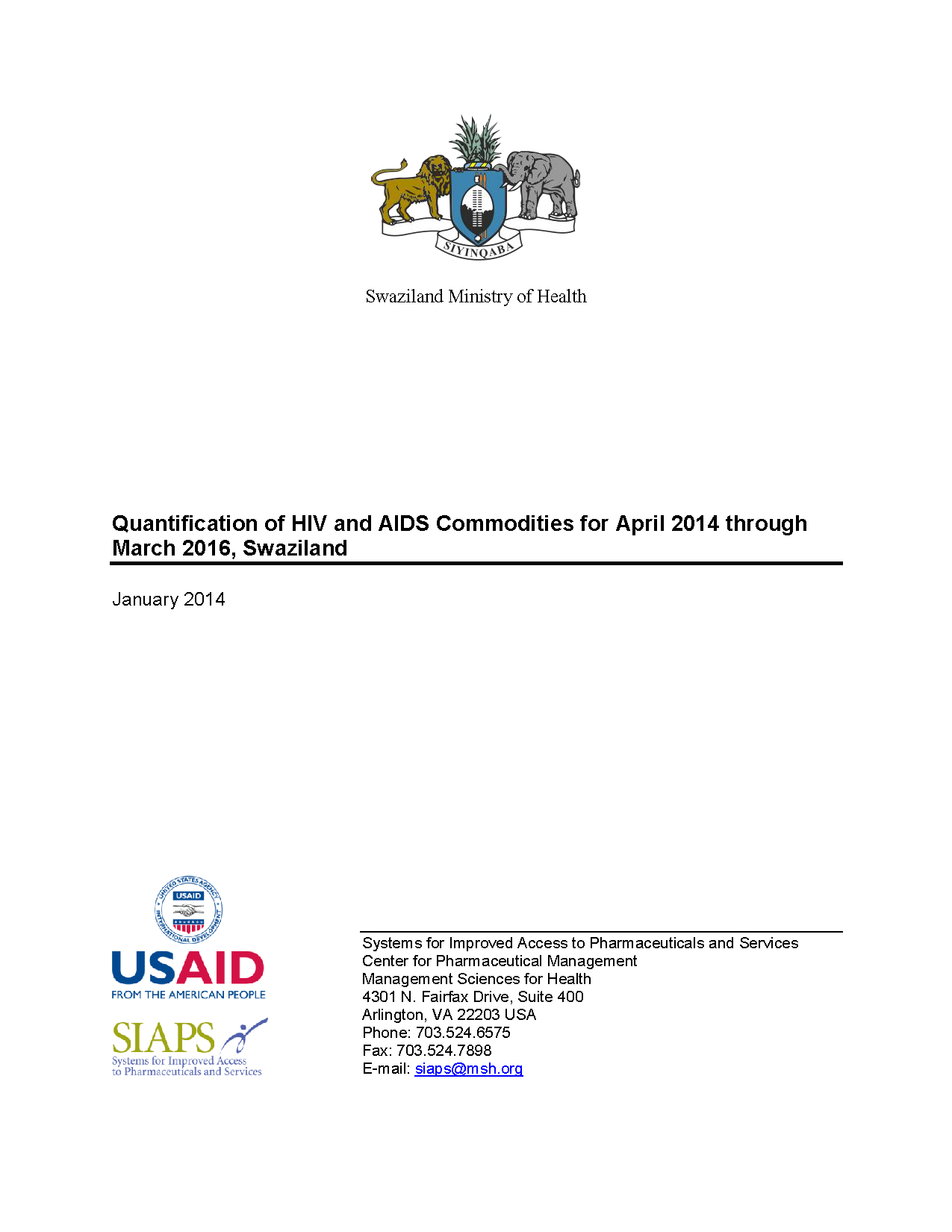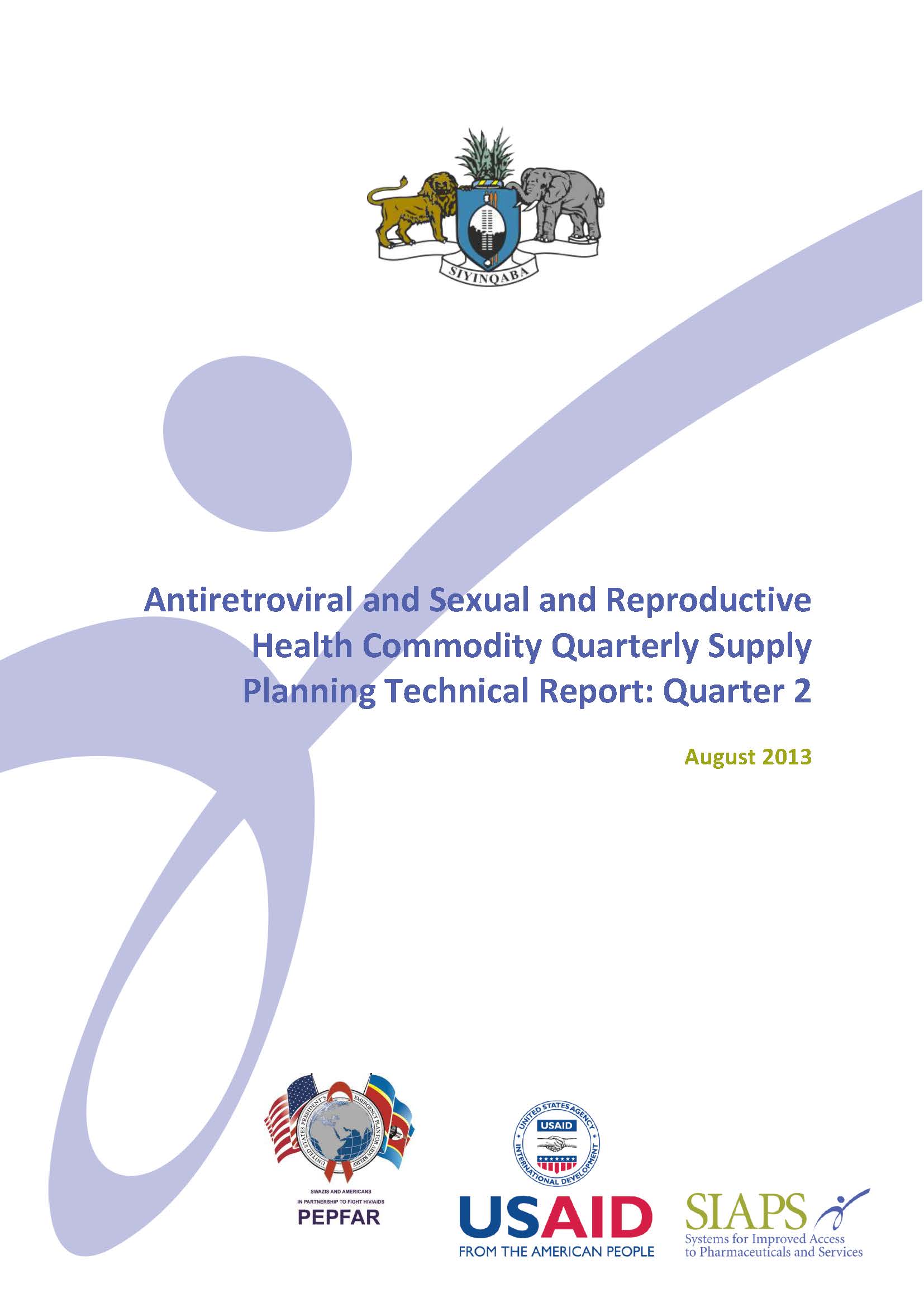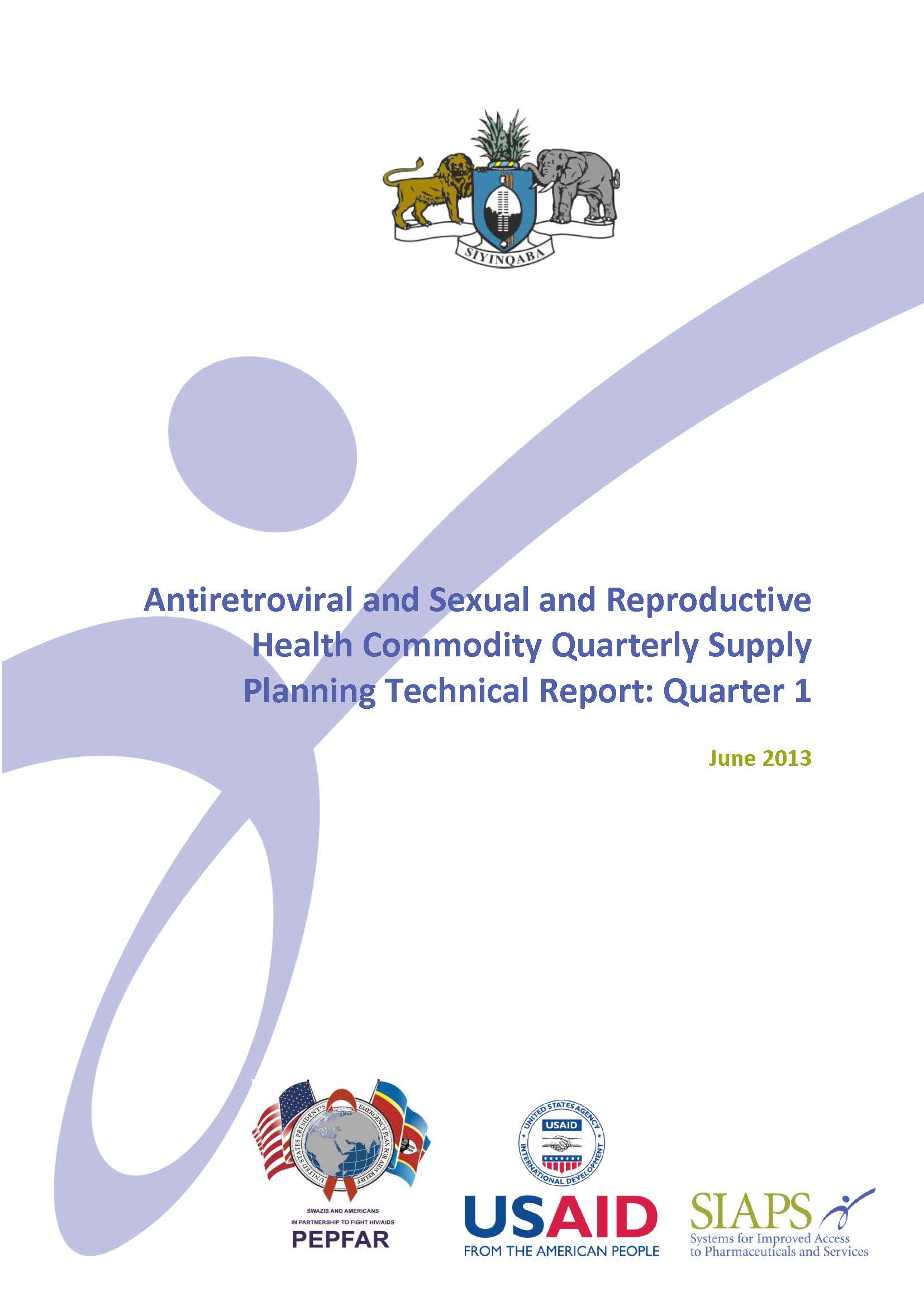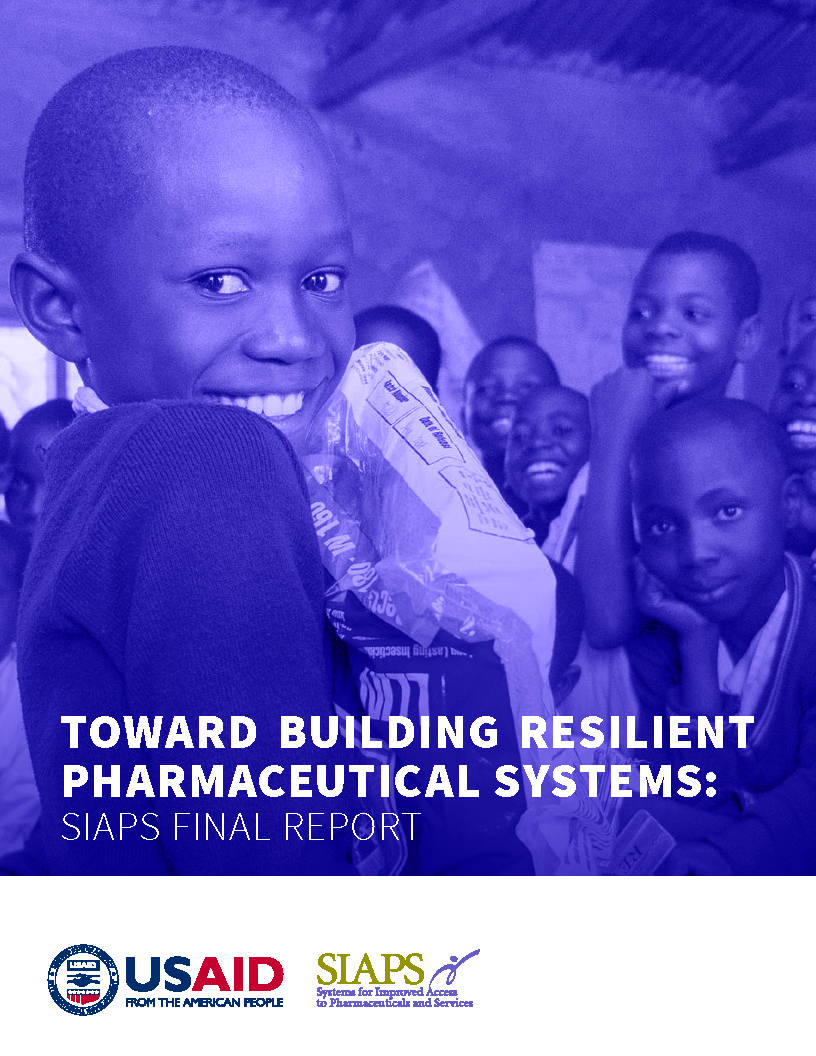In 2012, SIAPS supported the Directorate General of Family Planning (DGFP) in conducting a five-year (2012-2016) forecasting exercise for reproductive health commodities and built the technical capacity of DGFP officials to manage the forecasting processes and analyze the FP2020 indicators pertinent to stock availability. SIAPS also assisted DGFP in forming the multi-stakeholder Forecasting Working Group (FWG) … Read more
A family planning quantification exercise was conducted with technical assistance from SIAPS and participation of all major stakeholders. The objective was to produce a forecast and supply plan for the period April 2016–March 2019. The results of this quantification exercise will be used to plan, mobilize, and secure financial resources for the quantification period. The … Read more
This guide will assist program managers, service providers, and technical experts when conducting a quantification of commodity needs for the 13 reproductive, maternal, newborn, and child health commodities prioritized by the UN Commission on Life-Saving Commodities for Women and Children. These 13 commodities have diverse characteristics: some are new products that are in the process … Read more
A middle-income country in Central Africa, Cameroon had an HIV prevalence of 4.3% in 2011 in the general population 15–49 years of age (2011 DHS). The number of HIV patients on antiretroviral treatment (ART) has grown from a few hundred in 2001 to 78,000 at the end of 2009 and to 131,531 at the end … Read more
A Kane, antiretroviral, ARVs, Cameroon, Forecasting, ForLab, HIV, HIV/AIDS, JB Evi, Quantification, Supply chain management, YK Towa
In September 2012, the United Nations Commission on Life-Saving Commodities for Women and Children released its recommendations for improving access to 13 priority commodities across the reproductive, maternal, newborn, and child health (RMNCH) continuum. These recommendations focused on developing markets, both local and global, for these commodities; strengthening national supply chains; and improving demand. One … Read more
The Maternal Health Technical Reference Team (MHTRT) was formed to address issues related to access to essential maternal health commodities, specifically oxytocin, misoprostol, and magnesium sulfate, and to support the United Nations Commission on Life-Saving Commodities (UNCoLSC) for Women and Children. MHTRT divided into multiple subgroups, one of which was the Tools Subgroup, tasked to compile an … Read more
The Government of Swaziland (GOS) is committed to ensuring that reproductive health commodities are available to the people of Swaziland. One of the pillars of family planning commodity security is the continuous and optimal availability of these commodities. With technical assistance from UNFPA and USAID-funded SIAPS, as well as the participation of all major stakeholders, the Ministry of Health connducted a quantification exercise with … Read more
The Government of Swaziland (GoS) has made significant progress in addressing the HIV and AIDS epidemic through a series of strategic plans and frameworks. An important component of the plans and frameworks is the regular and systematic quantification of HIV and AIDS commodities to ensure the regular and uninterrupted supply of life-saving medicines. This technical report details the quantification … Read more
Each year, the Swaziland Ministry of Health’s Central Medical Store (CMS) conducts a one-year quantification exercise to budget for HIV commodities. In 2012/2013, using supply planning software developed by the United States Agency of International Development (USAID)-funded Systems for Improved Access to Pharmaceuticals and Services (SIAPS), the Ministry was able to save $US 6.1 million by avoiding … Read more
ART, ARV, Forecasting, G Shiferaw, HIV/AIDS, K Matshotyana, Logistics Management Information System, Procurement, Quantification, Quarter 2, Reproductive Maternal Newborn and Child Health, stock, Supply chain management, Swaziland, Technical Report
Swaziland’s Central Medical Store worked with SIAPS to carry out a one-year quantification exercise for HIV commodities that informed quantities and budgets required for FY 2013 through FY 2014. SIAPS put into place a systematic process for supply planning using the Pipeline® Monitoring and Procurement Planning System (PipeLine), a software tool designed to help program managers monitor the status … Read more
ART, ARV, Forecasting, G Shiferaw, HIV/AIDS, K Matshotyana, Logistics Management Information System, Procurement, Quarter 1, stock, Supply chain management, Swaziland, Technical Report
